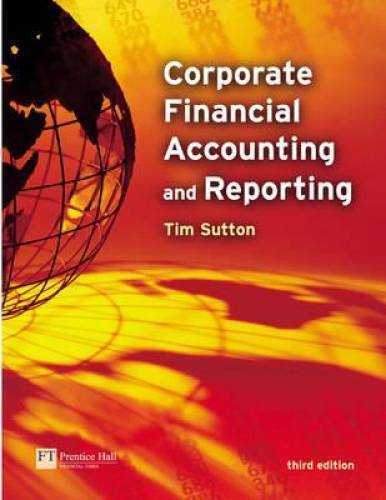Effect of falling prices on corporate financial statements General prices can decrease as well as increase. The
Question:
Effect of falling prices on corporate financial statements General prices can decrease as well as increase. The most notable example of a country that has experienced falling prices in recent years is Japan. After rising slightly between 1990 and 1994, general prices – as measured by the GDP deflator – declined by 2.3% between 1994 and 1999. They fell by 1.5% in 1999 alone.
A decline in the general price level undermines reported numbers in company accounts. The effect is the opposite of that of rising prices. Set out below are summary 1999 financial statements for Japan Inc. – the combined income statements and balance sheets of some 2.5 million non-financial companies in Japan, before adjustment for changing prices. (Amounts are in billions of yen.)
Japan Inc.
Summary 1999 accounts Income statement for year Sales 1,383,464 Cost of sales (including depreciation of 41,690) −1,076,441 Sales and general management costs −277,753 Operating profits 29,270 Financial and other non-operating income +19,432 Financial and other non-operating expenses −21,778 Recurring profits 26,924 Special profits and losses −14,281 Profit before tax 12,643 Corporate income tax and inhabitant tax −10,475 Net profit 2,168 Balance sheet, end-year Assets 1999 1998 Liabilities and capital 1999 1998 Cash and deposits 134,657 133,415 Bills and accounts payable 182,315 204,494 Bills and accounts receivable 224,076 225,886 Short-term borrowings 180,978 189,511 Inventories 115,793 134,470 Other current liabilities 171,655 182,466 Other current assets 113,599 138,097 Current liabilities 534,948 576,471 Current assets 588,125 631,868 Long-term borrowings 322,518 369,046 Tangible fixed assets, net 495,943 498,514 Other long-term liabilities 140,212 114,711
[of which: Land 170,314 162,374] Long-term liabilities 462,730 483,757 Intangibles 15,158 17,923 Investments and other 183,039 161,954 Share capital 81,482 78,131 Fixed assets 694,140 678,391 Share premium 47,594 42,581 Revenue reserves 157,903 131,606 Deferred charges 2,650 2,540 Special legal reserve 257 253 Capital and reserves 287,236 252,571 Total assets 1,284,915 1,312,799 Total liabilities and capital 1,284,914 1,312,799 Source: Statistics Bureau, Government of Japan, Statistical Yearbook 2002, Table 5-11.
Required Assess the impact of the decline in general prices on Japan Inc’s reported 1999 income. What is the likely effect of the decline – in directional terms (i.e. + or −) – on
(a) operating profits and
(b) recurring profits that year, assuming HC/CPP accounting? Give reasons for your answers.
AppenedixLO1
Step by Step Answer:






